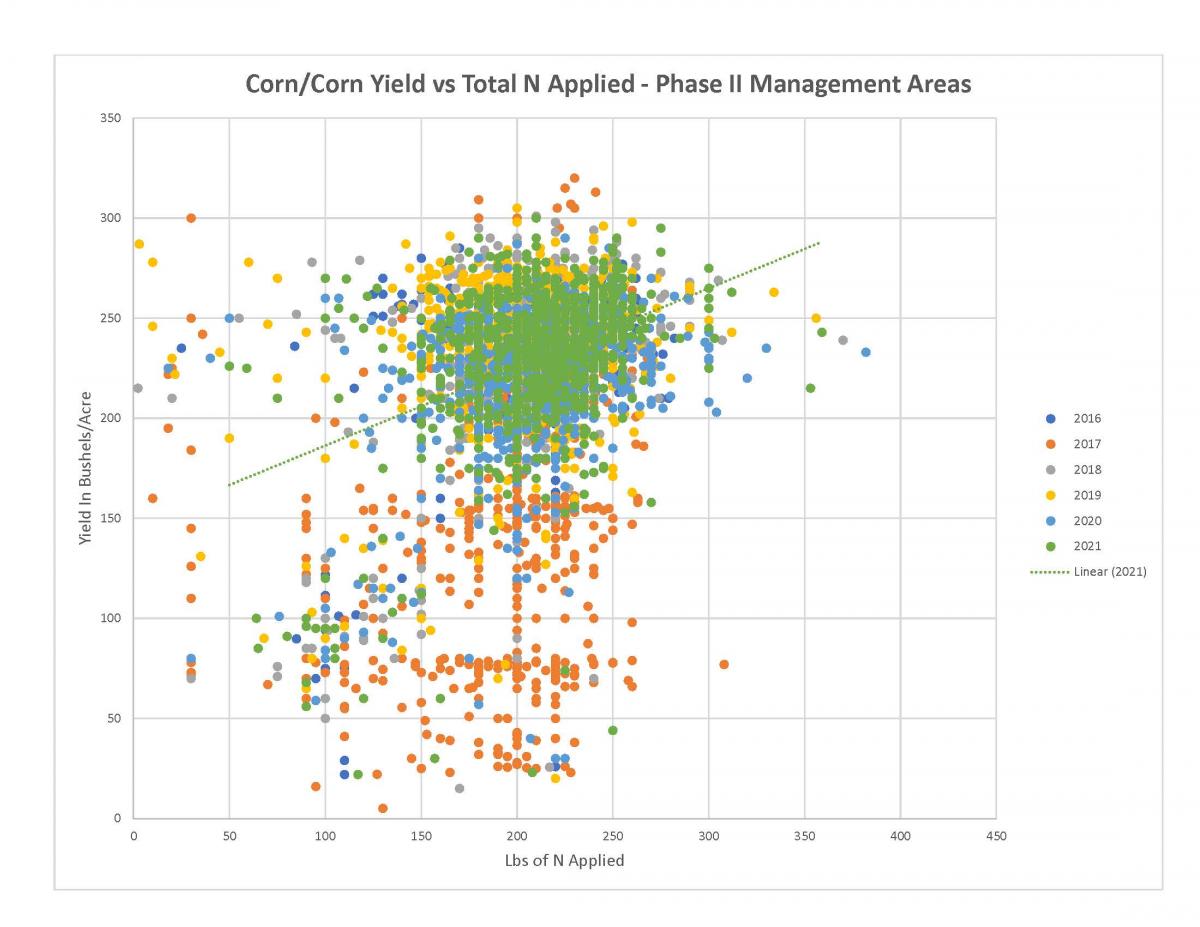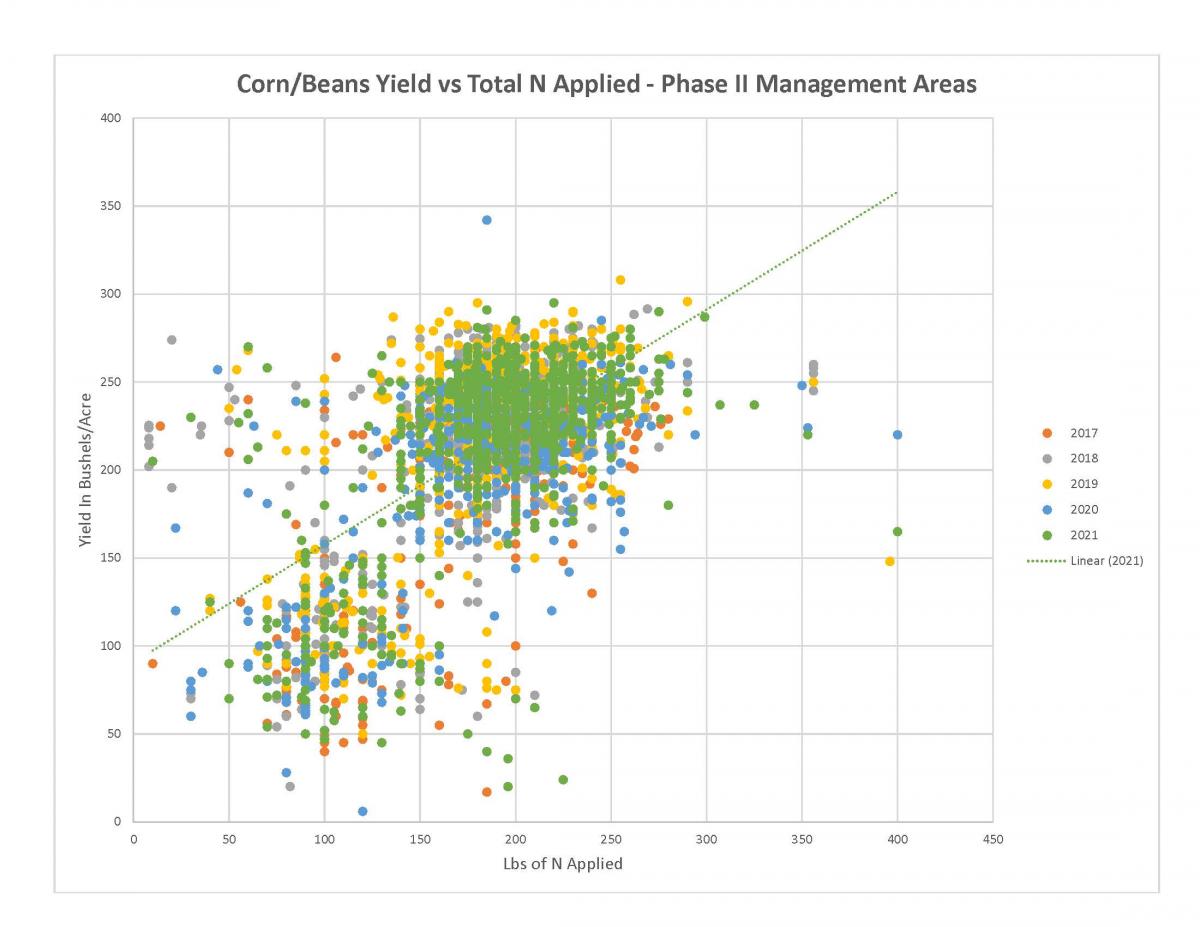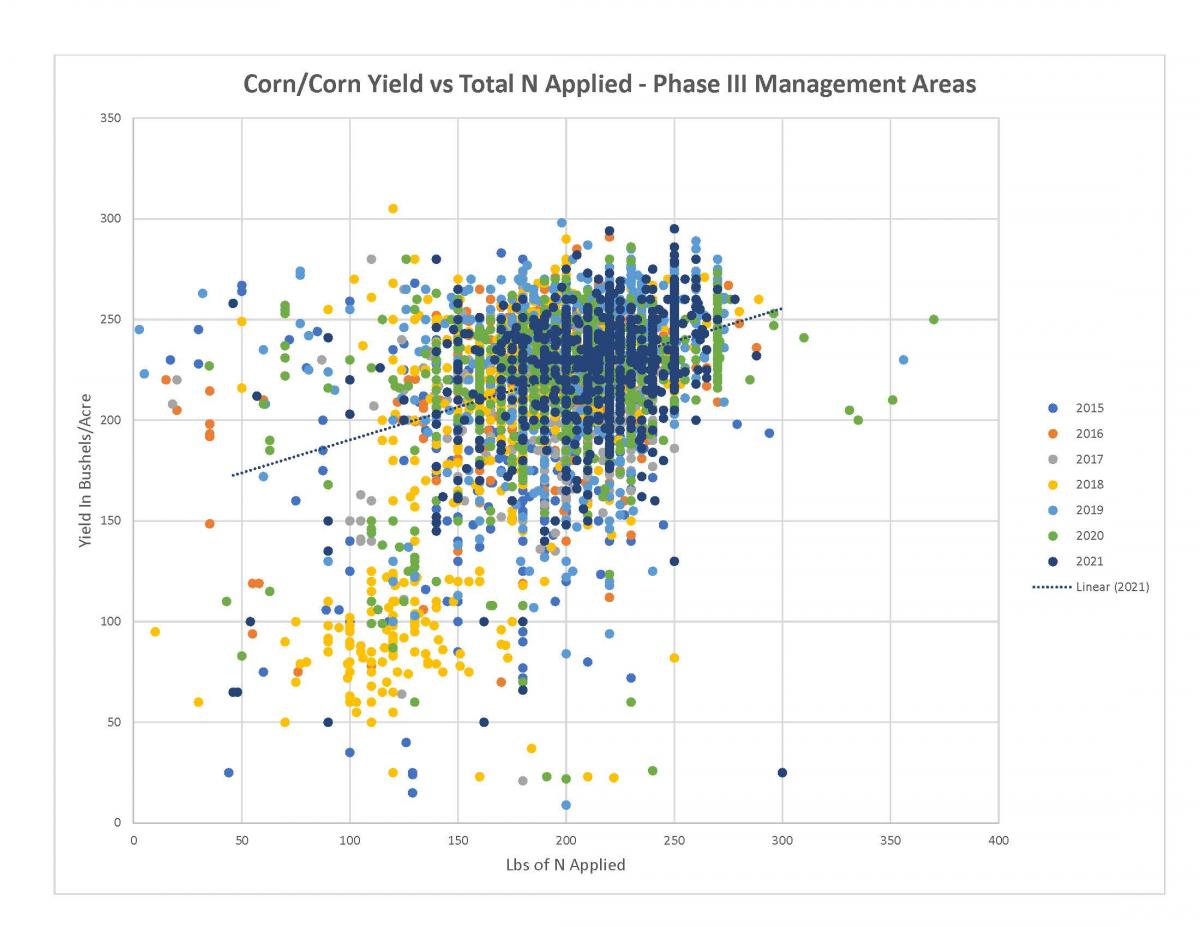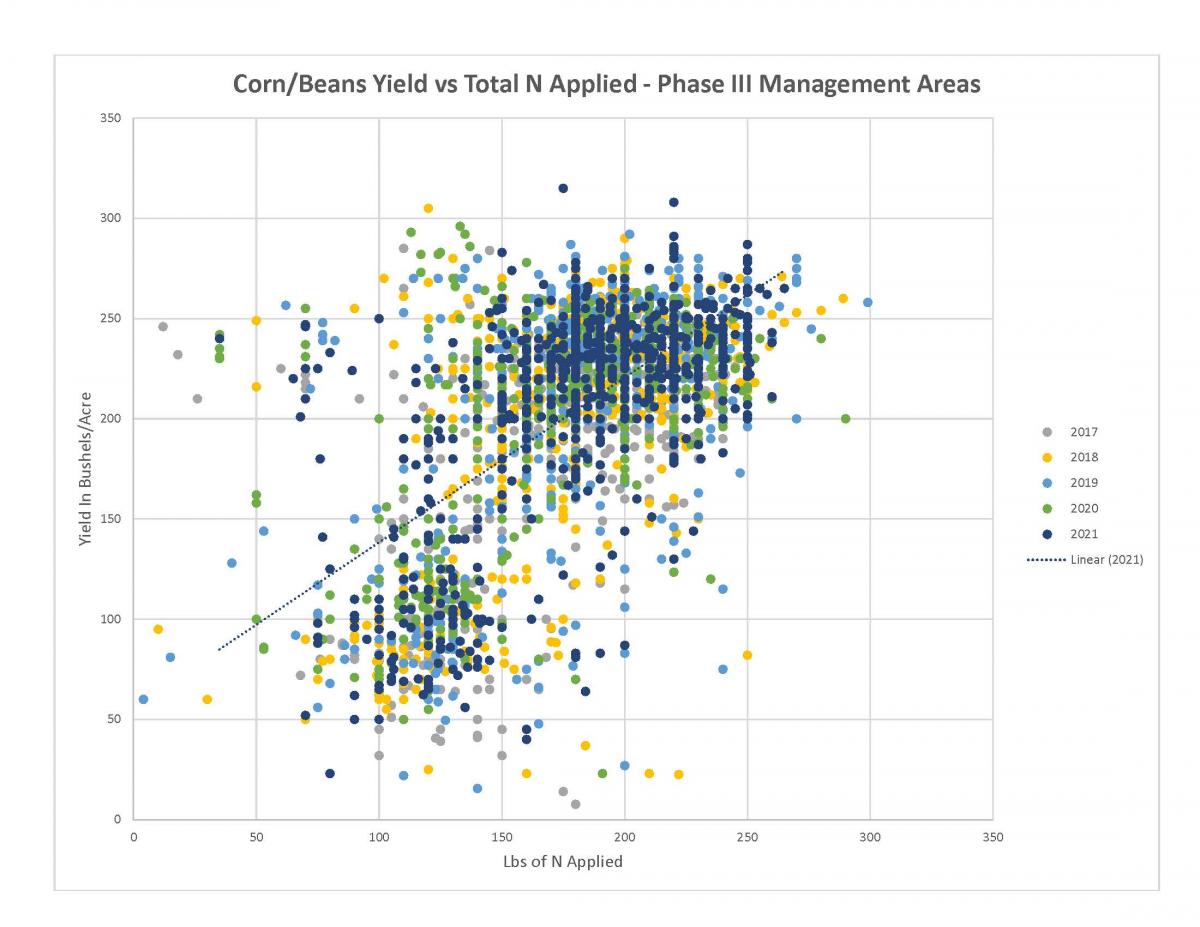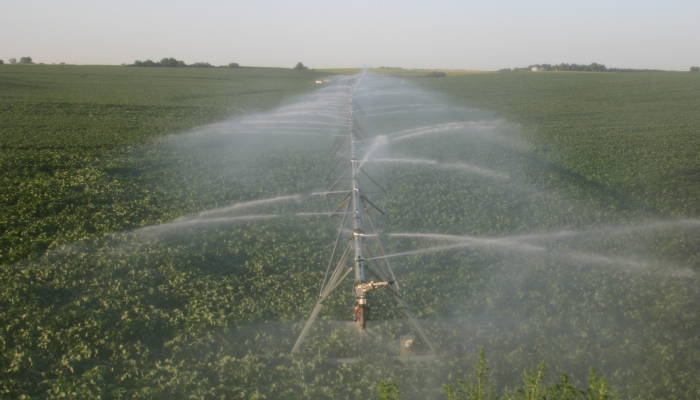Producer-Reported Data Analysis Shows Less Fertilizer, Similar Yield
According to data reported to the Upper Big Blue Natural Resources District, some district corn growers are not seeing maximum return on their fertilizer investment. This conclusion is based on information provided by corn growers in Phase II and Phase III management areas, which reveals that those who are growing continuous corn and those using a corn and bean rotation are using similar quantities of nitrogen, meaning those growing soybeans may not be taking a full legume credit on their nitrogen calculations. On average those growing beans in their rotation only applied 15 pounds less nitrogen than those growing corn. While this shows a certain level of nitrogen use efficiency, there is still room for improvement.
The graphs provided by the NRD (below) that chart this data show that producers in Phase II and III areas growing corn on corn from 2017-2021 applied between less than 50 pounds and over 350 pounds of nitrogen per acre, with the bulk of producers falling in the 150 to 250 pounds per acre range. Similarly, yields for that group ranged from less than 50 bushels per acre to over 300 bushels, with the majority falling between 200 and 250 bushels. For the corn/bean rotation fields for the same period the numbers are remarkably similar. Producers applied between less than 50 and up to 400 bushels per acre, with the majority applying between 150 and 250 pounds per acre. Yields ranged from less than 50 bushels per acre to over 300 bushels.
The nitrogen use efficiency numbers reported in this period ranged from 0.61 to 1.61. The majority of years in this period showed NUE of less than 1, however the trend line has continued to increase over this period.
“Our concern is that they aren’t taking enough credit for their residual nitrogen and legumes in their nitrogen calculations,” explains Dan Leininger, NRD water conservationist. Additionally, Leininger says throughout the 2017-2021 period, the rate of nitrogen applied to all fields in Phase II and III areas increased, while yields did not. This continued increase in fertilizer use without a corresponding yield increase means there is likely nitrogen over application. This wasted fertilizer is left over in the field after the growing season—which directly impacts the quality of the water in the district.
“Every year, if you over apply nitrogen by even 30 pounds, it adds up in the system,” said Leininger, who recommends producers split apply fertilizer to increase efficiency. “Soil isn’t a good storage place for fertilizer. As much as you can, apply fertilizer in season.” 